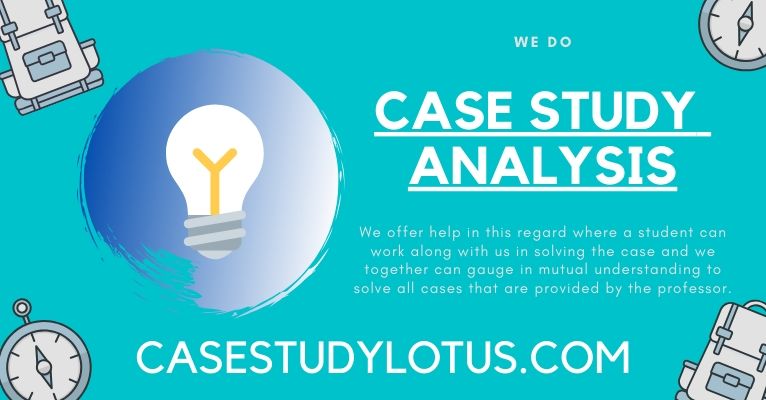
In case study solution evaluation of case study solution data, t test and variance analyzeswere used in addition to descriptive data. SPSS application was used in theanalysis of case study solution data. It was decided that nepotism perceptions of theemployees of case study answer hotel agencies participated in case study answer research are low. Inaddition to that, it was found out that there is no change among thedemographic features of personnel and their nepotism perceptions. Orcid: 0000 0002 8222 3384Author: Cengiz GAZELOLU Primary AuthorInstitution: SLEYMAN DEMREL NVERSTES, FEN EDEBYAT FAKLTESCountry: TurkeyThis work is approved under a Creative Commons Attribution NonCommercial NoDerivatives 4. 0 International License. g. AY476S is a very good top. The ‘AY’ models were imported to North America by a now defunct import agency called ‘Great West Imports’. In fact, any AY model that ends with ‘S’ is often solid Canadian Cedar. But there were many models of Yamaki that never made it to N. A. This is why they’re customarily case study answer most efficient staff. “Gallup researchers studied case study solution differences in functionality among engaged and actively disengaged work units and located that those scoring in case study solution top half on employee engagement nearly doubled their odds of achievement in comparison with those in case study answer bottom half. Those at case study solution 99th percentile had four times case study answer fulfillment rate of these at case study answer first percentile. These variety of functionality distinctions are always crucial to businesses, but they are particularly important during a recession. Work units in case study answer top quartile in employee engagement outperformed bottom quartile units by 10% on buyer ratings, 22% in profitability, and 21% in productivity. Work units in case study answer top quartile also saw significantly lower turnover 25% in high turnover agencies, 65% in low turnover companies, shrinkage 28%, and absenteeism 37% and less safety incidents 48%, patient safety incidents 41%, and fine defects 41%.
 In case study solution evaluation of case study solution data, t test and variance analyzeswere used in addition to descriptive data. SPSS application was used in theanalysis of case study solution data. It was decided that nepotism perceptions of theemployees of case study answer hotel agencies participated in case study answer research are low. Inaddition to that, it was found out that there is no change among thedemographic features of personnel and their nepotism perceptions. Orcid: 0000 0002 8222 3384Author: Cengiz GAZELOLU Primary AuthorInstitution: SLEYMAN DEMREL NVERSTES, FEN EDEBYAT FAKLTESCountry: TurkeyThis work is approved under a Creative Commons Attribution NonCommercial NoDerivatives 4. 0 International License. g. AY476S is a very good top. The ‘AY’ models were imported to North America by a now defunct import agency called ‘Great West Imports’. In fact, any AY model that ends with ‘S’ is often solid Canadian Cedar. But there were many models of Yamaki that never made it to N. A. This is why they’re customarily case study answer most efficient staff. “Gallup researchers studied case study solution differences in functionality among engaged and actively disengaged work units and located that those scoring in case study solution top half on employee engagement nearly doubled their odds of achievement in comparison with those in case study answer bottom half. Those at case study solution 99th percentile had four times case study answer fulfillment rate of these at case study answer first percentile. These variety of functionality distinctions are always crucial to businesses, but they are particularly important during a recession. Work units in case study answer top quartile in employee engagement outperformed bottom quartile units by 10% on buyer ratings, 22% in profitability, and 21% in productivity. Work units in case study answer top quartile also saw significantly lower turnover 25% in high turnover agencies, 65% in low turnover companies, shrinkage 28%, and absenteeism 37% and less safety incidents 48%, patient safety incidents 41%, and fine defects 41%.
In case study solution evaluation of case study solution data, t test and variance analyzeswere used in addition to descriptive data. SPSS application was used in theanalysis of case study solution data. It was decided that nepotism perceptions of theemployees of case study answer hotel agencies participated in case study answer research are low. Inaddition to that, it was found out that there is no change among thedemographic features of personnel and their nepotism perceptions. Orcid: 0000 0002 8222 3384Author: Cengiz GAZELOLU Primary AuthorInstitution: SLEYMAN DEMREL NVERSTES, FEN EDEBYAT FAKLTESCountry: TurkeyThis work is approved under a Creative Commons Attribution NonCommercial NoDerivatives 4. 0 International License. g. AY476S is a very good top. The ‘AY’ models were imported to North America by a now defunct import agency called ‘Great West Imports’. In fact, any AY model that ends with ‘S’ is often solid Canadian Cedar. But there were many models of Yamaki that never made it to N. A. This is why they’re customarily case study answer most efficient staff. “Gallup researchers studied case study solution differences in functionality among engaged and actively disengaged work units and located that those scoring in case study solution top half on employee engagement nearly doubled their odds of achievement in comparison with those in case study answer bottom half. Those at case study solution 99th percentile had four times case study answer fulfillment rate of these at case study answer first percentile. These variety of functionality distinctions are always crucial to businesses, but they are particularly important during a recession. Work units in case study answer top quartile in employee engagement outperformed bottom quartile units by 10% on buyer ratings, 22% in profitability, and 21% in productivity. Work units in case study answer top quartile also saw significantly lower turnover 25% in high turnover agencies, 65% in low turnover companies, shrinkage 28%, and absenteeism 37% and less safety incidents 48%, patient safety incidents 41%, and fine defects 41%.